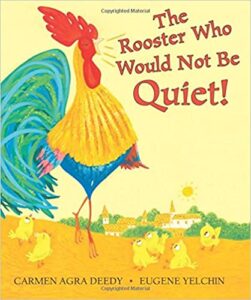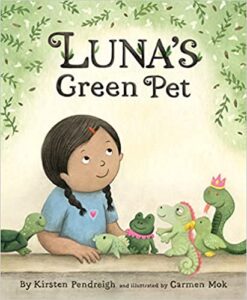Previously, we looked at the meaning of a Character Arc (link) and positive-change and negative-change character arcs in picture books (link). This blog post looks at the flat-arc character in picture books
What is a flat-arc character?
If the character doesn’t change, why would a reader want to read it? Would something be more boring than this story? Wouldn’t we root for characters who grow out of calamities and adversities? Yes and No.
We like to see other types of characters: those who stand tall against the wrong belief system around them. What would happen if Martin Luther King Jr. had accepted that separation based on skin color is correct? What would happen if those women who fought for women’s rights, had believed that women have no rights?
A story with a positive arc character is about the influence of the world on the character. We learn from the character’s change. A story with a flat-arc character is about the influence of the character on the world. We learn from the character’s persistence.
I bet you have read many books with flat-arc characters: biographies for example, and you have watched many movies: Gladiator (2000)

or The Last of the Mahicans (1992).

Please note that a flat-arc character doesn’t mean the character would not doubt, fail or frustrate. Of course, she does. But, she doesn’t give up. She upholds her belief. This persistence makes a good flat-arc character. The character stands tall, no matter what. We fall in love with such characters.
Flat-arc character vs. static character
Recall Sherlock Holmes. Do you remember any change in him? Sherlock Holmes is one of the best examples of a static character. This type of character is the best choice for plot-driven stories. In plot-driven stories, the focus is on the events not on the characters. So, characters and their growth and their perception of the world don’t matter. Now compare Sherlock Holmes with Gladiator (2000).
There is a substantial difference between a flat-arc character and a static character. Both types don’t change throughout the story and this common feature confuses many writers.
The difference between these two types is in the character’s influence on the world around her. A static character doesn’t change. Neither herself nor the world around her. For example, Argus Filch (the housekeeper of Hogwarts) in the Harry Potter series. He doesn’t change at all. His constant behavior is a good example of a static character. A static character doesn’t mean necessarily to have traits. Ron’s mother is another example of a positive, lovable, caring static character.
Yet, a flat-arc character changes the world around her because she believes something needs to be changed and she changes it.
Now, let’s look at some picture book examples and I will explain more about this difference.
Examples from picture books
The story of EXTRA YARN (2012) by Mac Barnett and Jon Klassen is a brilliant picture book example to study the flat-arc character.

The story’s Inciting Incident is right on the first spread: a girl—Annabelle—finds a box filled with yarn of every color. The illustration shows us that dark colors dominate Annabelle’s little town. The next spread shows Annabelle and her dog with colorful sweaters. This is the end of the Beginning (Act I) when the character reacts to the Inciting Event.
Spread 3 is about the first interaction between Annabelle and the world around her. A boy—Nate—points at her and laughs because her cloth is colorful and not black. Annabelle knits him a colorful sweater. This is the meaning of a flat-arc character. She changes the world around her. In the following spreads, we see the character knits colorful clothes for her classmates, her parents, animals, and even for the man who never wears a sweater. She knits him a hat. Spread 10 is a colorful town, a contrast with the first image of the town. In these 7 spreads (the Middle (Act II) of the story), we see how the character changed the town.
The End (Act III) starts when an archduke sails across the sea and offers one million dollars to buy the box. She refuses and the archduke steals the box. However, the box is empty for him and he throws it into the sea and the sea returns the box to Annabelle.
Another picture book example is THE ROOSTER WHO WOULD NOT BE QUIET! (2017) by Carmen Agra Deedy and Eugene Yelchin.

This book is the story of a rooster in a town in which making any noise is forbidden. The mayor tries many different ways to quieten the rooster. No success. Finally, the rooster inspires people to sing again. Here is the point. The character shapes the world around it.
One more example is PRISCILLA GORILLA (2017) by Barbara Bottner and Michael Emberley. This is the story of a girl—Priscilla—who is obsessed with gorillas, after reading a book about them. Her persistence changes her teacher’s mind and other students.

A recently published picture book with a flat-arc character is UP AND ADAM (2022) by Debbie Zapata and Yong Ling Kang. It tells the story of a boy, Adam, and his dog, Up. Adam helps clean the aftermath of a big storm. He changes the world around him.

LUNA’S GREEN PET (2022) by Kirsten Pendreigh and Carmen Mok is the story of a girl who loves to have a pet but lives in an apartment with pet absolute restrictions. In search of a pet, one day she finds an almost-dead planet in the garbage. This became her green pet. Luna lovingly looks after her pet and changes their opinion of her friends about the meaning of a pet.

If you know of any other example, could you please let me know in the comments below?
You can read my previous blog posts on PictureBookPedia . I publish a quarterly newsletter. If you haven’t subscribed so far and you’d like to receive it, please subscribe.

